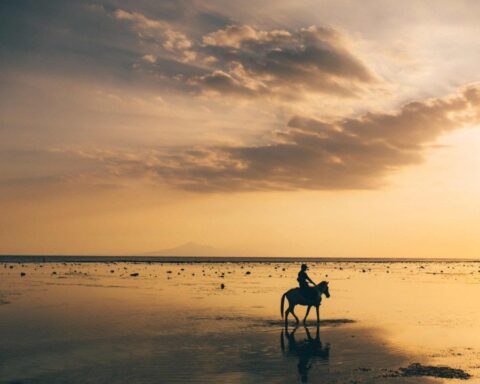The Sasak people have lived in Lombok for centuries. Still, to this day, they account for about 90% of the island’s population of over 3.4 million people. Adding to this number are Balinese and a small amount of Arabs, Chinese, Javanese and Bugis.
Lombok has a complicated history being overthrown by several cultures. In the 17th century, Balinese warriors took over Lombok’s Sasak royalty and eventually dominated the island. As Lombok was once ruled by Balinese Hindu culture, temples still stand to this day, as a delicate reminder of the island’s great history. However, nowadays, the Balinese remain a minority, specifically in the west of the island.
After the Balinese, the Dutch intervened, and control was taken of Cakranegara. Indonesia gained its independence, and in 1959, Lombok became part of the Nusa Tenggara Barat, and Mataram was declared its capital. In 1965, after the attempted coup in Jakarta, mass killings followed in Lombok of ethnic Chinese and communists. President Suharto’s New Order brought stability to the country, but crop failure and food shortages began which led to famine from 1966.
As the island slowly began to recover, tourism started to pick up in the 1980s but again, the country hit an economic crisis with political struggle. In early 2000s riots covered Mataram and still, the Chinese and this time Christians were the victims. Lombok took a downturn, and with the addition of the Bali bombings, the island was struggling. A small population of Chinese still reside in Cakranegara and Ampenan, after initially arriving with the Dutch, and after independence, many stayed in Lombok and opened businesses.
As time went on, Lombok began to take off again, with Bali being heavily explored, travellers turned to the road less travelled, and the Gili Islands started to boom. Now, Lombok is a quiet escape for travellers looking for an idyllic, natural retreat.
The arrival of Islam in the 15th century has shaped Lombok’s cultural identity into what it is today. Predominately, all Sasaks are Muslims. Within the culture, a fascination and demonstration of heroic trials and one-on-one contests still live on. A common practice is Peresehan, which is where two men fight with rattan staves using cowhide as a shield. There are also many traditional dances and rites of passage within the culture. Different regions of the island hold their own traditional dances closely. For example, in central and eastern Lombok, the Cupak Gerantang is performed, originating in Java; dancers wear masks and tell the story of a romantic hero, Panji.




